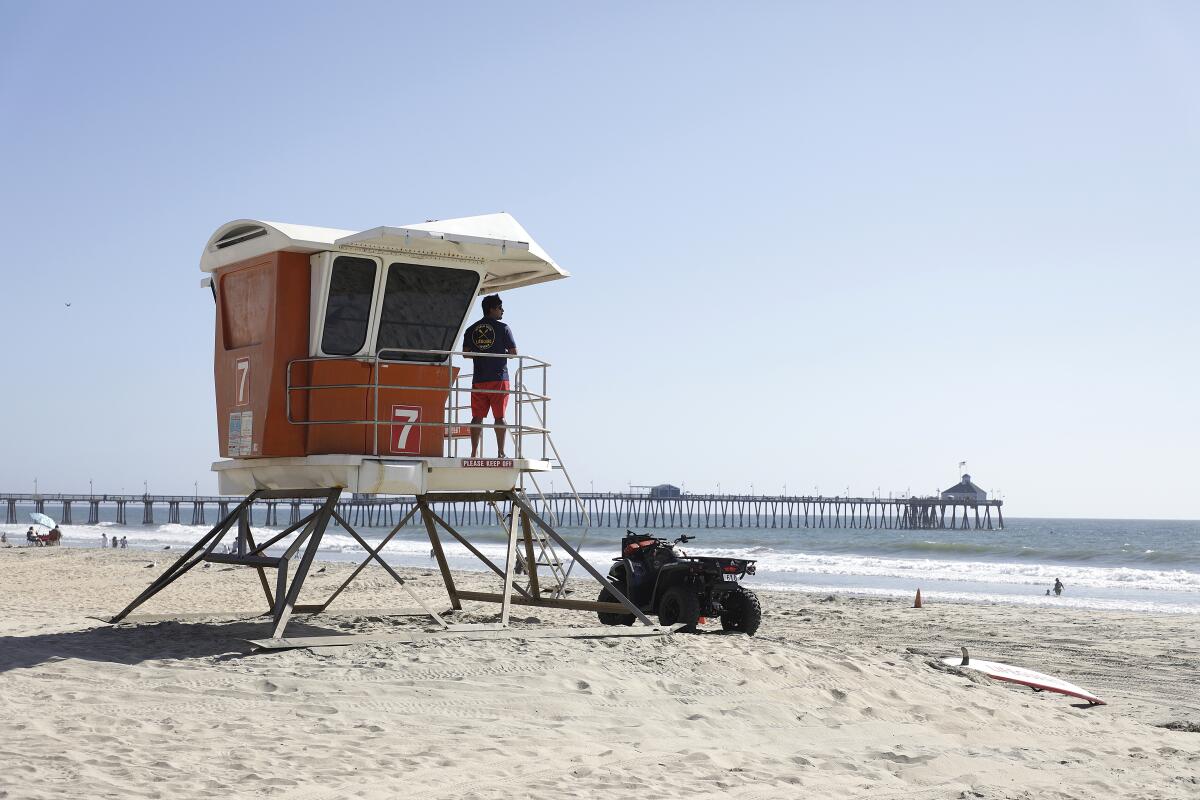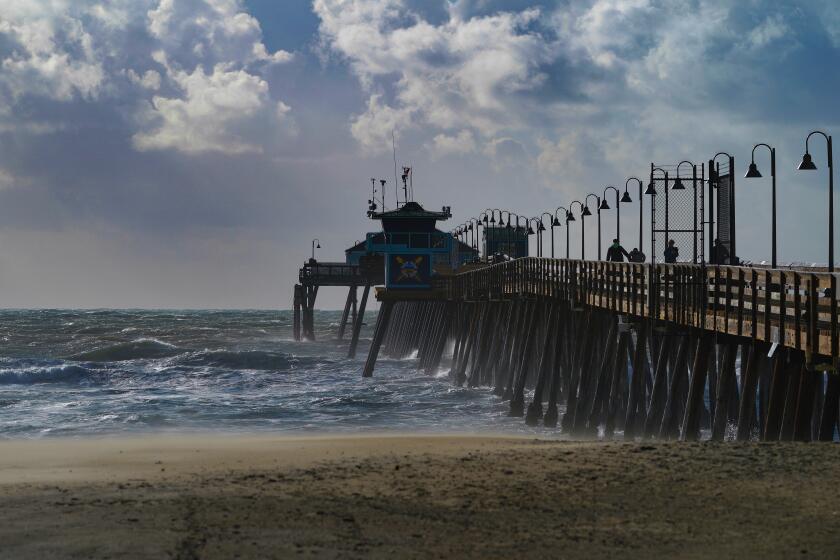California beach is most polluted seen in new study. People are ‘getting sick left and right’

- Share via
California is home to one of the most polluted beaches in the country, according to a new study — a stretch of surf so toxic officials have made repeated calls for a state of emergency.
Last year, the Surfrider Foundation tested thousands of water samples from coast to coast, as well as in Puerto Rico, Costa Rica and Vancouver, Canada, and found that 64% of the 567 sites tested had at least one sample with unsafe bacteria levels. Each location was tested multiple times, said Mara Dias, the foundation’s senior manager for the Clean Water Initiative.
“This is a measure of basically safety for swimming or surfing,” Dias told The Times. “Is the water safe for people to be in? Or could it cause them to be sick?”
The organization, a nonprofit environmentalist group, collected 9,538 water samples from the 567 sites, including rivers and creeks that discharge into the ocean, as well as the beaches nearby where people surf and swim. A quarter of the samples came from sites in California, from Marin County to San Diego County.
Among the top 10 most polluted locations mentioned in the report, three are in California. At the top of this list is Imperial Beach in San Diego, where every sample collected turned up bacteria counts that exceeded the state’s health standard for recreational waters, the report said.
That beach has been closed for more than two years because of toxic water from the Tijuana River Watershed flowing into the ocean, said Mayor Paloma Aguirre of the city of Imperial Beach, who has urged Gov. Gavin Newsom to declare a state of emergency there — a call she and others renewed last week.
“People in my community are getting sick left and right,” she said Tuesday of the effects of the sewage pollution on the water as well as the air. “We cannot afford to continue to punt the responsibility across the border because we have a dire situation here on United States soil, on California soil, that is harming California constituents.”
Tijuana sewage isn’t only in Imperial Beach waves. It’s in the air. And San Diegans are breathing it
UC San Diego researchers found that bacteria from raw sewage in the waters off Imperial Beach are becoming airborne, posing a potential health risk.
The other polluted California locations are Linda Mar Beach in Pacifica, where more than half the samples had unsafe bacteria levels; and the mouth of the San Luis Obispo Creek in San Luis Obispo, where 35% of the samples yielded those levels. Linda Mar Beach, a popular surf break, is at the mouth of the polluted San Pedro Creek, and the San Luis Obispo Creek discharges into the ocean at Avila Beach, Dias said.
“Any creek that flows through an urban area is certainly going to be susceptible to similar sources of pollution, road runoff, sewage infrastructure issues, pet waste that isn’t picked up properly,” Dias said. “It’s when they discharge at the ocean where people are recreating, that’s where it’s particularly problematic.”
Dias said those creeks are also tested because children often splash around and play in those shallow waters.
“The parents think it’s safe, right? But those creeks receive a lot of pollution,” she said.
Dias said that, typically, ocean water tends to be clean, except after it rains, when urban runoff and stormwater end up down at the beach, or if there’s a sewage failure nearby.
She advised beachgoers to avoid going into the water for 72 hours after it rains in California, to pay attention to local pollution advisories, and to wash their hands and rinse off with fresh water after swimming.
“I worry as climate change creates more of those storms that we’re going to be seeing more problems,” Dias said.
More to Read
Sign up for Essential California
The most important California stories and recommendations in your inbox every morning.
You may occasionally receive promotional content from the Los Angeles Times.












